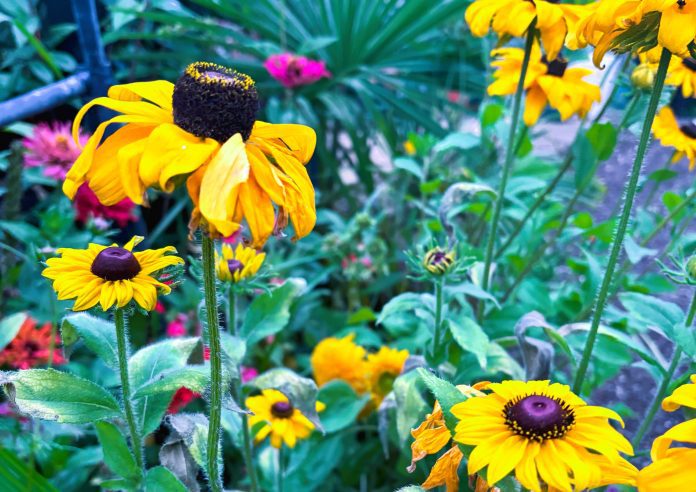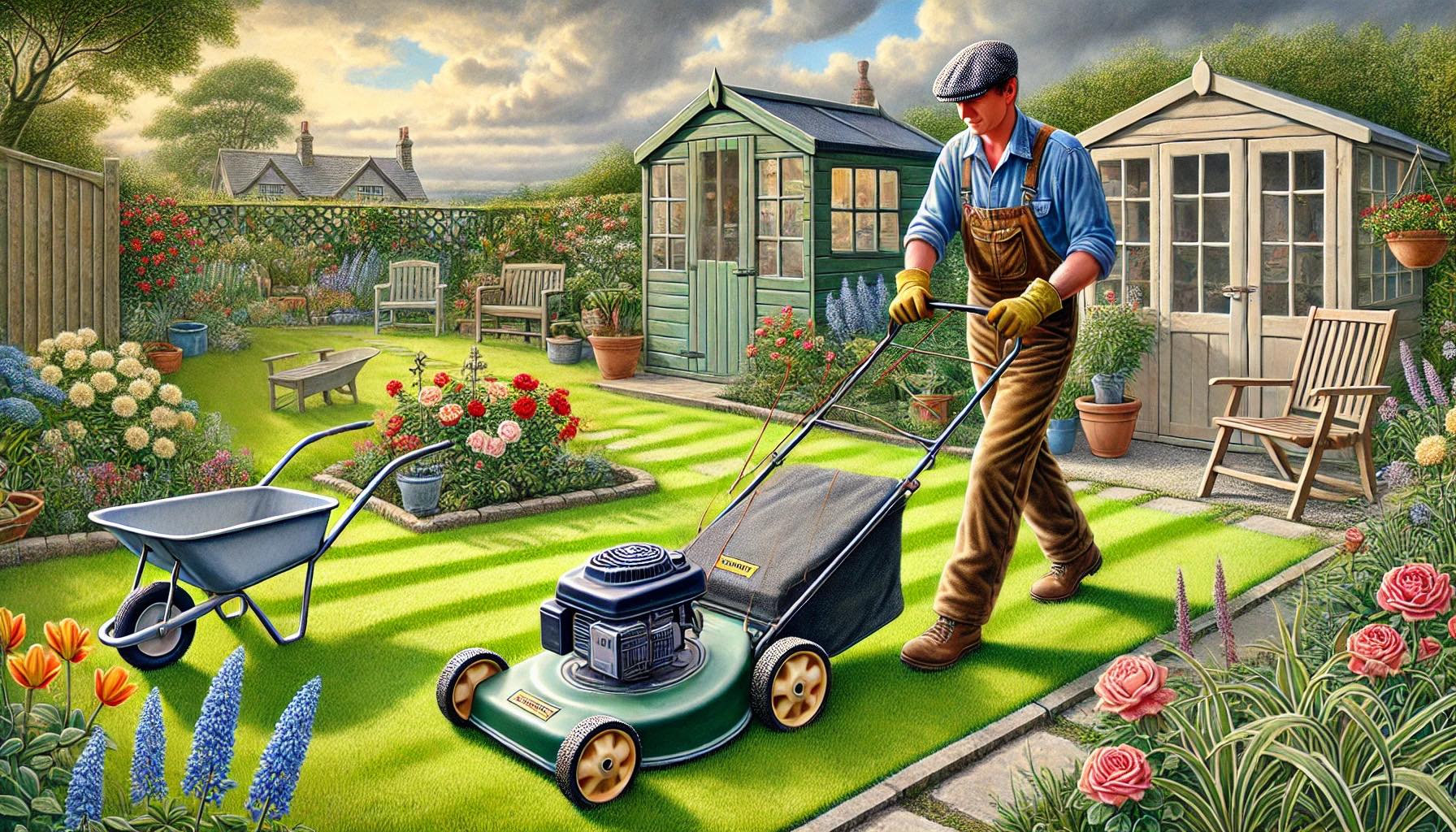Rudbeckias, commonly known as black-eyed Susans or coneflowers, are cheerful, low-maintenance perennials (and sometimes annuals) that bring vibrant yellow, orange, or even red hues to gardens. They thrive in most climates, provide long-lasting blooms, and attract pollinators such as bees and butterflies. Here’s how to grow, care for, and choose the best varieties of Rudbeckias for your garden.
1. Choosing the Right Rudbeckia Variety
There are several Rudbeckia species, with some being annuals and others perennials. The two most common species are:
- Rudbeckia hirta: This is often treated as an annual or short-lived perennial. It features bold yellow or orange petals surrounding a dark brown center.
- Rudbeckia fulgida: Known for being more perennial and hardy, this species has longer-lasting blooms and is commonly represented by the popular cultivar ‘Goldsturm.’
Here are some of the best varieties:
- Rudbeckia ‘Goldsturm’ (Rudbeckia fulgida var. sullivantii): A top-performing perennial variety, ‘Goldsturm’ is known for its bright yellow flowers and resilience. It grows to about 2-3 feet and blooms prolifically from mid-summer to fall.
- Rudbeckia hirta ‘Indian Summer’: This annual variety produces extra-large, golden-yellow flowers, sometimes as large as 9 inches across. It’s excellent for borders and containers, and grows to about 3 feet.
- Rudbeckia hirta ‘Cherry Brandy’: One of the more unique cultivars, ‘Cherry Brandy’ displays deep burgundy petals with a contrasting dark center. It’s a great choice if you’re looking to add rich color variation to your garden.
- Rudbeckia hirta ‘Prairie Sun’: Another standout for its two-toned flowers, this variety features soft yellow petals with lime-green centers. It grows tall (up to 3 feet) and makes a striking addition to any border.
- Rudbeckia subtomentosa ‘Henry Eilers’: This perennial has quilled yellow petals surrounding a dark brown cone. It’s a bit taller, reaching heights of up to 5 feet, and adds vertical interest to the garden.
2. Ideal Growing Conditions
Rudbeckias are highly adaptable, but they will thrive if planted in the right conditions:
- Sunlight: These plants love full sun and will bloom more profusely when given 6-8 hours of direct sunlight. Some varieties can tolerate partial shade, but flowering might be less abundant.
- Soil: Rudbeckias aren’t fussy about soil types. They can grow in average garden soil but prefer well-draining, moderately fertile soil. Adding compost before planting will give them a good start.
- Watering: These flowers are drought-tolerant once established, but they will benefit from regular watering during hot, dry spells. Keep the soil evenly moist, especially when the plants are young or just transplanted.
- Climate: Rudbeckias are hardy in USDA Zones 4-9, making them a great choice for a wide range of climates. They’re tough enough to handle both hot summers and colder winter temperatures.
3. Planting Rudbeckias
From Seeds:
- Timing: If starting from seed, you can sow indoors 6-8 weeks before the last frost, or directly in the garden after the danger of frost has passed.
- Spacing: Sow the seeds thinly, as plants should be spaced 12-18 inches apart to allow for good air circulation. Cover seeds lightly with soil, and they will germinate in 7-21 days.
From Transplants or Division:
- When to Plant: Plant transplants in the garden in spring or early fall. If dividing existing plants, it’s best to do this in early spring when the new growth appears.
- Depth: Make sure to plant them at the same depth they were in their containers or nursery pots. Water them in well after planting.
4. Caring for Rudbeckias
- Fertilizing: Rudbeckias don’t require much feeding. A light application of a balanced, slow-release fertilizer in the spring should be enough to support healthy growth. Over-fertilizing can lead to floppy plants, so be cautious.
- Deadheading: To encourage more blooms, deadhead spent flowers regularly. This will help prolong the flowering period and keep your plants looking tidy.
- Mulching: Applying a layer of organic mulch (such as bark chips or compost) around the base of the plants will help retain moisture, suppress weeds, and protect roots during the winter.
- Staking: Taller varieties, like ‘Henry Eilers’ or ‘Prairie Sun,’ may need staking, especially if grown in windy areas or if the soil is too rich, causing the plants to grow leggy.
5. Pest and Disease Management
Rudbeckias are relatively problem-free, but they can sometimes be affected by:
- Powdery Mildew: This fungal disease can affect plants during humid conditions, causing a white powdery coating on the leaves. To prevent this, space plants properly and water at the base to avoid wetting the leaves.
- Leaf Spot: A bacterial or fungal infection that creates brown or black spots on the leaves. Remove affected leaves and provide good air circulation to reduce the risk.
- Deer and Rabbit Resistance: Fortunately, most Rudbeckia varieties are deer and rabbit resistant, making them a safe choice for gardens where wildlife might be an issue.
6. Propagating Rudbeckias
Rudbeckias can be propagated through seeds, division, or stem cuttings:
- Seeds: Collect seeds in late summer or early fall by allowing the flower heads to dry on the plant. Once they are brown and dry, cut off the seed heads and store them in a cool, dry place.
- Division: Every 3-4 years, divide mature Rudbeckia plants in spring to maintain their vigor and prevent overcrowding.
7. Companion Plants for Rudbeckias
Rudbeckias pair beautifully with other garden favorites. Here are some excellent companions:
- Echinacea (coneflower): With similar growing requirements, echinacea provides an appealing contrast in flower shape and often blooms in shades of pink and purple.
- Sedum: The fleshy leaves of sedum offer an interesting texture contrast, while their late-season blooms complement the vibrant hues of Rudbeckias.
- Russian Sage: The delicate blue flowers and silvery foliage of Russian sage provide a striking contrast to the bold yellow and orange tones of Rudbeckias.
- Grasses: Ornamental grasses like Miscanthus or switchgrass add movement and height, blending well with the daisy-like flowers of Rudbeckias.
Conclusion
Rudbeckias are a fantastic addition to any garden. They offer bright, cheerful blooms, are easy to grow, and come in a variety of sizes and colors to suit different garden styles. Whether you prefer the perennial vigor of ‘Goldsturm’ or the unique hues of ‘Cherry Brandy,’ there’s a Rudbeckia variety for every gardener. With minimal care, these hardy plants will reward you with a dazzling display of color year after year.




